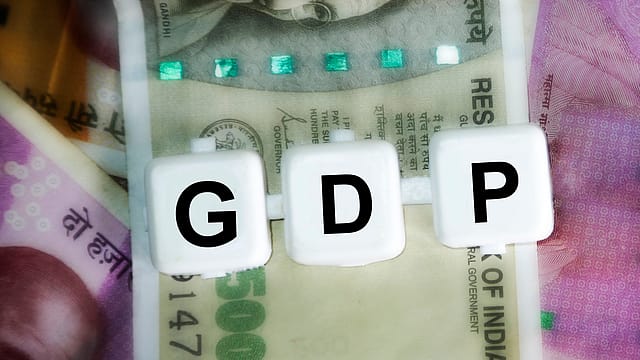SBI forecasts Q2 GDP growth at 5.8%
ADVERTISEMENT

SBI Research on Monday said it expects India's GDP to grow at 5.8% during the second quarter of the ongoing financial year even as there is a wide divergence in market consensus regarding Q2 GDP numbers to be released on November 30.
The SBI Composite Leading Index (CLI) – a basket of 41 leading indicators which includes parameters from almost all the sectors – based on monthly data shows declining economic activity after June 2022 to September 2022. In the month of October 2022, it signals turning-points with an increase in economic activity, making the Q3 FY23 GDP growth more optimistic, the SBI Ecowrap report says.
"We believe that Q2 manufacturing sector growth is likely to be weak on the back of margin compression. For example corporate results, ex BFSI, for Q2FY23 shows degrowth in EBIDTA by 14% Y-o-Y as against 35% EBIDTA growth in Q2 FY22, though the top line continued to grew at a healthier pace," writes Soumya Kanti Ghosh, group chief economic adviser, State Bank of India.
"Net sales grew by 28% in Q2FY23 while bottom line down by around 23%. Further, corporate margin seems to be under pressure, as reflected in results of around 3000 listed entities ex BFSI, on account of higher input costs with declining EBIDTA margin, on aggregate basis, from 17.7% in Q1FY22 to 10.9% in Q2FY23," Ghosh says.
January 2026
Netflix, which has been in India for a decade, has successfully struck a balance between high-class premium content and pricing that attracts a range of customers. Find out how the U.S. streaming giant evolved in India, plus an exclusive interview with CEO Ted Sarandos. Also read about the Best Investments for 2026, and how rising growth and easing inflation will come in handy for finance minister Nirmala Sitharaman as she prepares Budget 2026.
This comes at a time when the International Monetary Fund (IMF) has projected that global growth will slow from 6% in 2021 to 3.2% in 2022 and 2.7% in 2023 due to sharper-than-expected slowdown, high inflation, tighter financial conditions, increase in cost of living, Russia-Ukraine war and lingering Covid-19 pandemic. The multilateral agency expects global inflation to rise from 4.7% in 2021 to 8.8% in 2022.
Several indicators suggest the Indian economy is making resilient progress in Q2 FY23 in spite of the drag from global spillovers, elevated inflation and some slackening of external demand as geopolitical developments take their toll on world trade, says the report.
"Overall, a sub 6% growth if it materialises in Q2, could imply that India is likely to have expanded at lower than the 7% benchmark. We however believe there is somehow a large disconnect between leading indicators and GDP growth since the onset of pandemic. Growth impulses continue to be strong and it may be better to look through the GDP headline numbers for a couple of quarters before arriving at a definitive conclusion about the growth trajectory," writes Ghosh.
"In 2022, India has been confronted with high volatility in the forex market as well as elevated and persistent inflation brought on by external spillovers. How India deals with these challenges from a position of strength imparted by the resilience of its macrofundamentals, buffers and sound macro management by policymakers needs to be watched," the report further says.
